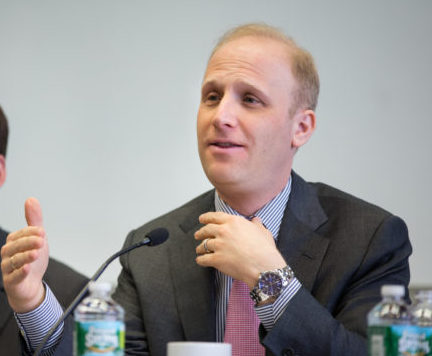
The past few years in regulation offer lessons for the next five.
The 2008 financial crisis and ensuing Great Recession inaugurated a sea change in thinking in Washington and around the world. Despite trillions of dollars of taxpayer-backed bailouts, investors and markets lost trillions of dollars in value, inflicting immense suffering on families and businesses around the world. The old thinking that had dominated Washington policy circles and many other sites of elite regulatory consensus had proven to be clearly bankrupt: Markets do not always self-correct, at least not without enormous and costly impacts on innocent third parties and society.
Beginning with financial regulation but affecting policy across the spectrum, what has emerged from the rubble is an attempt to instill, or in many places restore, appropriate regulation. While the debates continue over whether the efforts are enough, too much, or too little, it is worth pausing to reflect on the experience of the last few years and whether they may offer us lessons for the next few years to come.
The first and most important lesson of the last few years is that regulation is important. Markets need structure; they need policing. There is no such thing as a “free market.” That idea itself is more myth than reality. Prior to the modern regulated market of the 20th Century, brutal labor and living conditions, widespread accidents, horrific pollution, frauds on investors, and bank panics were just some of the hallmarks of industrialization. If you go farther back in history, it does not get better: Neither state-backed mercantilism nor feudal orders in medieval Europe were models of fair and efficient markets either. In all of these pre-modern systems, we see massive shifts in costs and burdens onto the backs of the powerless, often at the barrel of a gun. In many countries around the world, this still happens.
What distinguishes the modern, regulated world is respect for the rule of law as the foundation for an orderly market and a fair and functioning society. From tort rights to environmental regulation, the existence of debt contracts to consumer financial protection, the functioning of our modern capitalist markets—including the protection of the public interest—depends upon effective systems of law and regulation.
A second lesson we can draw from the last five years is that there are major obstacles that stand in the way of achieving smart, effective, and flexible regulation. Interests groups with billions of dollars in profits at stake fight fiercely against needed regulation in the halls of Congress, in the conference rooms of the regulators, and in the courts. This is understandable and unavoidable in an open society.
The challenge is that our democracy is poorly equipped at balancing industry pressures with the public interest and the stated goals of regulation. Legislators must be responsive to their individual constituencies and may have seemingly good reasons not to act in the collective public’s best interest. Legislative budgets are typically constrained so greatly that legislators’ staffs are often overwhelmingly outnumbered. Regulators in the agencies face similar constraints. Several agencies, including the U.S. Commodity Futures Trading Commission, suffer facially inadequate budgets—often smaller than the annual technology budget of just one of the many financial firms they oversee. As if the funding constraints were not enough, lobbyists often push members of Congress to advance policy riders that constrain regulatory action by stripping away funding for specific initiatives. Legislators, and even more the regulators, tend to be inherently cautious and take seriously the maxim of “do no harm.” But caution, too, can lead to unintended consequences.
Another obstacle to effective regulation stems from the burdens of the regulatory implementation process itself. Perhaps nowhere are these burdens more evident than in the process of producing economic analysis of new regulations. We should all want regulators to write economically smart regulation, and ensuring that regulators include economists in the process makes sense. But as currently applied in practice, economic analysis of new regulations often creates significant impediments to the very goal it is trying to achieve. It is costly and strains limited agency budgets. It fails to address, and may well exacerbate, information asymmetries with industry. And when it results in agencies failing to complete rules in a reasonable amount of time, or in inexpert courts striking them down on technicalities, it represents an undemocratic—indeed arbitrary— chokehold on the law.
While businesses often cheer when regulation gets delayed or struck down, the resulting ossification in the system actually runs contrary to their long-term interests in ensuring that regulations remain nimble and adaptable. How quickly has the U.S. Securities and Exchange Commission been able to update the rules to respond to electronic trading and flash crashes, let alone complete all of its swaps and other Dodd-Frank Act mandates? Not quickly at all. That is actually not a good state of affairs for an industry that needs clear rules of the road to operate.
Given both the need for effective regulation and the obstacles to its development, it is actually rather impressive how much progress government has made on the regulatory front over these last five years. A range of new financial, environmental, and other rules has been able to move forward. Yet clearly much work remains. How that work will be done remains to be seen. Will it be through technical rules and administrative enforcement? Broad principles and court litigation? Or structural transformation? Or will it be a combination of the three? The answers will continue to depend on the circumstances.
For example, the U.S. Department of Labor’s new conflict-of-interest rule for investment advisers includes some specific requirements to address the most common, egregious problems. But it also incorporates the broad principle that advisers must act in the best interest of their clients, combined with the prospect of court enforcement for problems that arise in particular circumstances. By combining specific rules and the more flexible, common law-style approach, the Labor Department’s new rule provides a much stronger framework for protecting retirement savers than was in place before.
 Similarly, the Volcker Rule (for which I was one of the legislative staff drafters in Congress) combined some structural change, some broad principles, and some detailed rules. Although its leading legislative sponsors view the Volcker Rule as a “modern Glass-Steagall Act,” the rule’s mixed regulatory approach might be the source of some of the criticism the rule has received. There is no doubt that differentiating between speculative “proprietary trading” and trading for customers is a new and challenging way to erect a wall between safer banking and more risky aspects of banking. But U.S. Senators Jeff Merkley (D-Ore.) and Carl Levin (D-Mich.) knew it would be challenging. So they redrafted the original proposal to ensure that regulators would not be caught in the never-ending effort of perfectly identifying “proprietary trading,” but instead would focus on defining a space that is fairly well understood to be safer and customer oriented: “market-making,” among other permissible activities. By focusing on market-making rather than proprietary trading, regulators could use metrics like customer turnover and first-day profits and losses to focus on largely objective indicators. The question simply would be how much market-making would be permitted. When combined with oversight of traders’ compensation structures, regulators should be able to lay down much brighter lines for what is permissible versus what is prohibited. In doing so, the Volcker Rule has turned a general principle into structural reform, while maintaining—and potentially even enhancing—market liquidity. The question, though, is whether the Volcker Rule is being meaningfully enforced to achieve these outcomes. To date, we continue to lack sufficient transparency to evaluate that question.
Similarly, the Volcker Rule (for which I was one of the legislative staff drafters in Congress) combined some structural change, some broad principles, and some detailed rules. Although its leading legislative sponsors view the Volcker Rule as a “modern Glass-Steagall Act,” the rule’s mixed regulatory approach might be the source of some of the criticism the rule has received. There is no doubt that differentiating between speculative “proprietary trading” and trading for customers is a new and challenging way to erect a wall between safer banking and more risky aspects of banking. But U.S. Senators Jeff Merkley (D-Ore.) and Carl Levin (D-Mich.) knew it would be challenging. So they redrafted the original proposal to ensure that regulators would not be caught in the never-ending effort of perfectly identifying “proprietary trading,” but instead would focus on defining a space that is fairly well understood to be safer and customer oriented: “market-making,” among other permissible activities. By focusing on market-making rather than proprietary trading, regulators could use metrics like customer turnover and first-day profits and losses to focus on largely objective indicators. The question simply would be how much market-making would be permitted. When combined with oversight of traders’ compensation structures, regulators should be able to lay down much brighter lines for what is permissible versus what is prohibited. In doing so, the Volcker Rule has turned a general principle into structural reform, while maintaining—and potentially even enhancing—market liquidity. The question, though, is whether the Volcker Rule is being meaningfully enforced to achieve these outcomes. To date, we continue to lack sufficient transparency to evaluate that question.
Other areas of regulation are likely to continue to see a combination of technical rules, broad principles, and structural transformation. Increasingly, though, it seems like structural solutions are a larger part of the debate than in the past. The prominence that the Glass-Steagall Act has assumed in the 2016 presidential primaries underscores how structural solutions remain potent economic policy ideas. Similarly, the return of antitrust to the center of the political and regulatory conversation may also foreshadow greater attention to structural issues.
Many other areas of policy will require a similar set of choices be made about which regulatory tools to deploy. Ultimately, decisions about law and regulation will be impossible to disconnect from the democratic process that put them in place. Without a doubt, the public is deeply frustrated with the current political and policy process, including the nation’s system for making and enforcing regulation. Industry does not always win the entire battle, but they undoubtedly influence the resulting product of the regulatory process. The Volcker Rule again serves as a good example. Even when legislators and regulators overcome overwhelming odds to adopt genuinely groundbreaking change, it is fair to question whether the deck is so stacked against the public interest by the lobbyist architecture in Washington that implementation will fall far short of what is needed.
In a recent speech at the Administrative Conference of the United States, U.S. Senator Elizabeth Warren (D-Mass.) highlighted numerous ways in which powerful interests exert outsized influence against the public interest in the administrative process. Whether you agree or disagree with her analysis or solutions, her speech should focus all of our attention on ensuring that the administrative state can continue to reflect the strength of our democracy. Let us remember that democracy is not a spectator sport, and neither is regulation. We all have an obligation to make law work.
This essay is part of The Regulatory Review‘s sixteen-part series, RegBlog@5.




